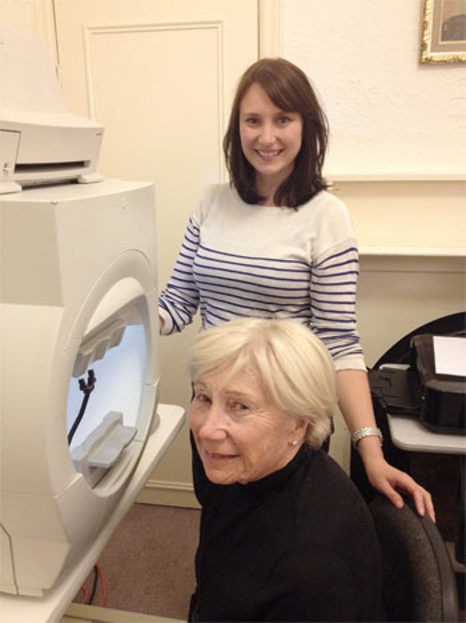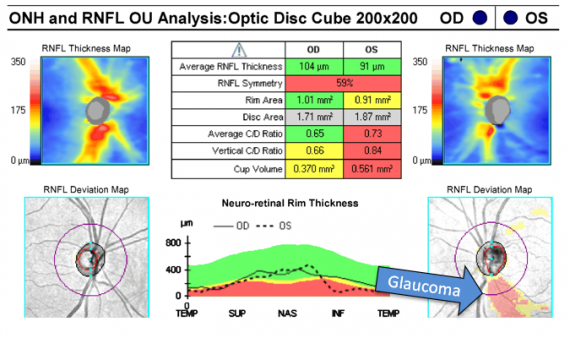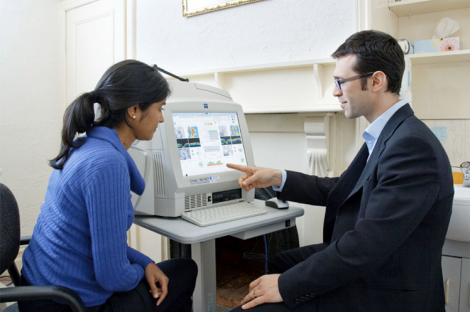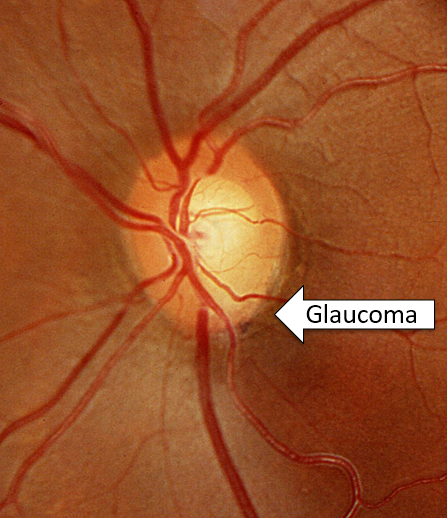Glaucoma Assessment
Dr Skalicky and his team strive for excellence and precision in glaucoma assessment – therefore only the latest and best technology is used to assess your risk of glaucoma.
Glaucoma can be difficult to detect, especially early in the disease. Several tests are required, each contributing unique information.
Visual field test
This test involves bright and dim lights shone in your peripheral vision - you will be asked to click a button each time you see a light. This is used to generate a map of peripheral vision for each eye. It can detect loss of peripheral vision from glaucoma that may not be obvious to you. It can also be used to monitor for change in glaucoma over time.

Visual field test result

Optic nerve OCT scan
The OCT scan generates a 3-dimensional image of the optic nerve. Glaucoma changes the shape and appearance of the nerve; the OCT detects such changes early and can be useful for diagnosing glaucoma. Serial OCT measurements can be used to monitor for change of glaucoma over time.
OCT printout showing left eye glaucoma >

Corneal thickness measurement
The cornea is the clear window at the front of your eye. Eye pressure is measured by pressing down the cornea and evaluating degree of depression. This can be influenced by corneal thickness as well as eye pressure. Knowing the thickness of your cornea helps in the assessment of your eye pressure.
< Optic Nerve OCT scanning

Optic nerve viewing by an expert
Glaucoma causes characteristic changes of the optic nerve when viewed through the eye using a magnifying lens. These changes can be subtle and difficult to detect; it is best to have the nerves viewed by a trained specialist to properly assess your glaucoma risk.
Monitoring Glaucoma
Glaucoma monitoring can usually be performed in collaboration between Dr Skalicky and your Optometrist. Patients with definite glaucoma should be seen regularly and have the appropriate tests repeated. This is to check that the treatment is sufficient to control the disease. The frequency of monitoring is tailored to your specific level of risk.

Accreditations & Credentials
Dr Skalicky is an active clinician, surgeon, researcher, teacher, academic and health advocate who has published over 60 articles in international Ophthalmology journals. Known as an Ophthalmologist ahead of the times, Dr Skalicky’s career highlights are exceptional atypical for his age.








